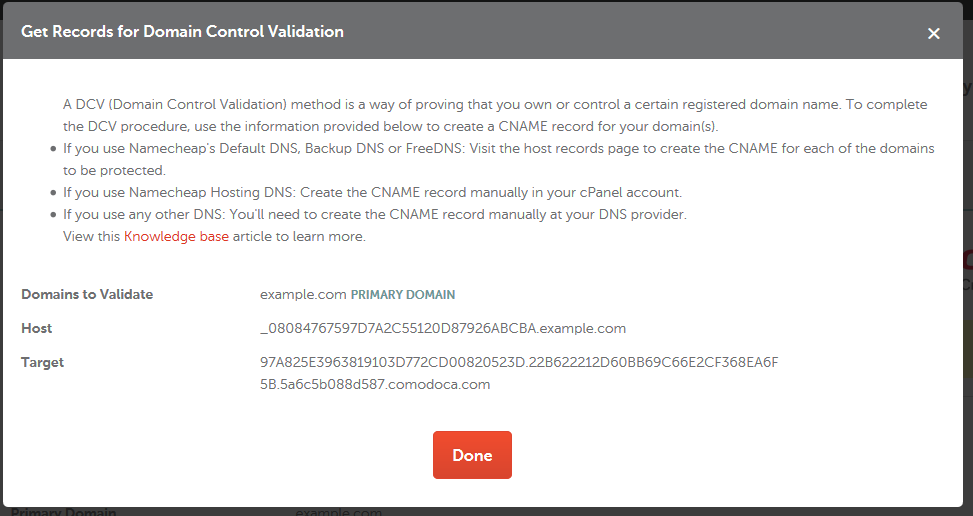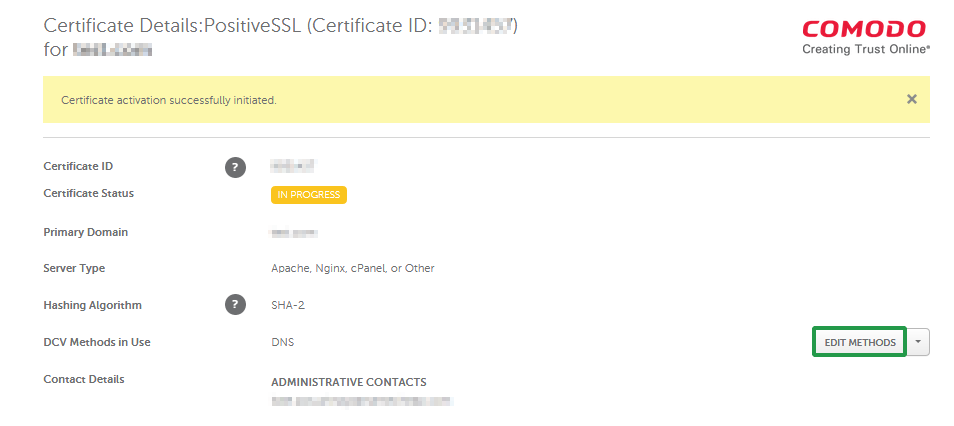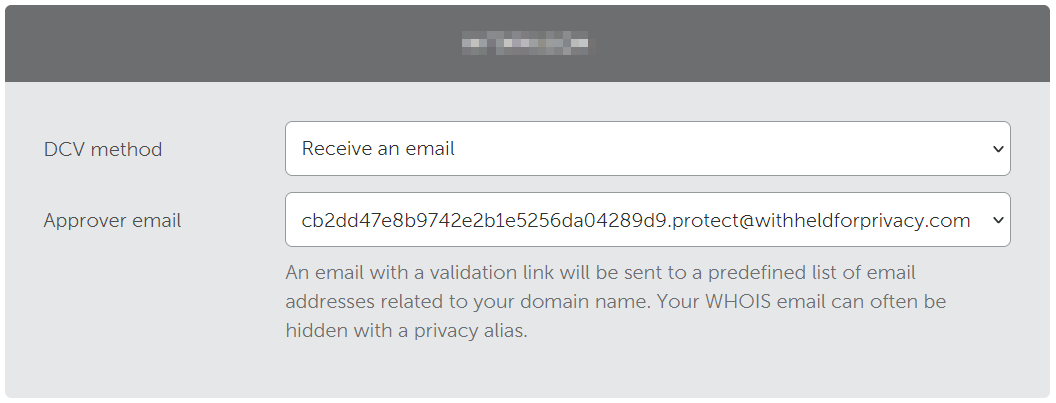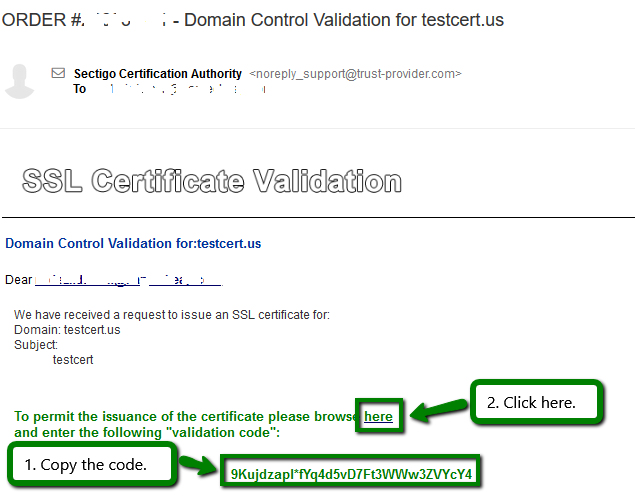| Subtotal | $0.00 |
| Subtotal | $0.00 |
Before an SSL certificate can be issued, the certificate applicant should confirm their domain ownership rights. This is called domain control validation (DCV). When you are activating your certificate, you will be presented with three methods of DCV to choose from:
If you need to switch your chosen DCV method, check the following guide:
This validation method involves adding a CNAME record to the DNS settings of your domain.

Here is a how-to video:
Here is the text version of the guide:
After you complete SSL activation, you’ll find instructions on completing this DCV method as well as the values you will need for the CNAME record in the SSL Details page of your account:

Click on Get Record to see the CNAME record values.




If you are activating a single-domain certificate for a subdomain, feel free to set the DNS record either for the bare domain directly, or for the subdomain. It will work both ways for the domain validation process.

Here is a how-to video:
Here is the text version of the guide.
When you’ve completed the activation process, you'll be directed to the SSL Details page in your Namecheap account, where you'll find instructions and a link to the Edit methods page where you can download the validation file.

Note: If you have a Multi-Domain SSL and choose this method of DCV for several domains, no link will appear in the yellow panel as each domain will have a different link. To verify each of the domains, you will need to create the corresponding links by following the instructions in the yellow box and checking each URL in your browser. In most cases, if a simple text line like the one below is shown on the screen, the validation file is accessible.

Once the file is uploaded and accessible externally via the following URL http://your_domain_name.com/.well-known/pki-validation/filename.txt, please click Save Changes/Retry Alt DCV. This will force the Certificate Authority to perform the DCV check.

Note: If you are activating your certificate for a subdomain, you can either upload the text to the domain main directory or the subdomain directory. So the file should be accessible either via http(s)://example.com/.well-known/pki-validation/ or via http(s)://sub.example.com/.well-known/pki-validation/ If you are activating a Multi-domain certificate for subdomains, the validation file should be placed into the Document root directory of each corresponding domain. We recommend that you upload it for each subdomain as well.
Note: If you have activated the certificate with domain.com indicated as the FQDN (Fully Qualified Domain Name) in your CSR code, please make sure that the file is available via http://domain.com/.well-known/pki-validation/file.txt . In this case, www.domain.com is considered to be under your control as well.
If your CSR code contains www.domain.com as the FQDN, please make sure that the file is available via the link http://domain.com/.well-known/pki-validation/file.txt . The file content shouldn't be changed in any way as the Comodo (now Sectigo) validation system is case sensitive.
Here is the text version of the guide:
Note: The Whois email address usually looks similar to 00222eeef898g6245jbkhdshml42@your_whois_privacy.service if the Whois privacy protection service is turned On. For domains registered with Namecheap, you will see something like: 00222eeef898g6245jbkhdshml42.protect@withheldforprivacy.com.
Note: If the Whois record email is missing from the list of possible emails, it means the Certificate Authority failed to retrieve the Whois record for your domain from the CSR code. This is common for domains with TLDs like .ca, .br, .uk, .au, etc. If this happens, you can select one of the generic emails from the list or use an alternative validation method.

After you complete SSL activation process, the Certificate Authority will email you at the selected address.
Note: If you choose a Whois email address, the validation email will be sent to the registrant email address (the one used to register the domain). If you’re unsure about the email address, check with your registrar (the company you registered your domain with). For Namecheap-registered domains, check the Domain List section in your account. Click "Manage" near the relevant domain, scroll down to "Domain contacts," and find the "Registrant Contacts" details where the registrant email is displayed.

Paste the code from the email and hit Next.

That's it!
If you do not receive the approval email, you can always retry it by clicking Resend email on the Edit methods page. The link to the Edit methods page is available in the validation instructions panel placed on the SSL Details page.



Then, perform the required steps to complete the DCV.
Note: You can also use this SSL Validation Tool to check your SSL status, switch the validation method, and speed up the SSL certificate issuance.
Note: If you have a Domain Validation certificate, it will be emailed to you shortly after DCV is complete.
If you have an OV or an EV certificate, your order should undergo business validation. Once you complete DCV, you will receive an email from Comodo (now Sectigo) with further instructions.
Need help? We're always here for you.